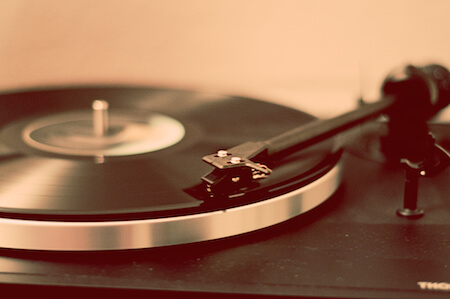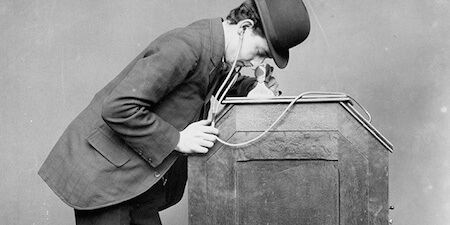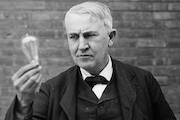Thomas Edison held 1,093 US patents. His inventions changed the whole word; his work influenced communications, the use of electricity, and even formed the groundwork for the modern alkaline battery. Though all of his inventions were important, it's worth going into further detail about three of his most innovative works: the phonograph, electric lighting, and the motion picture camera.
 Edison was quite a formidable figure!Courtesy of Louis Bacharach
Edison was quite a formidable figure!Courtesy of Louis Bacharach
The Phonograph
- The phonograph, invented in 1877, was Thomas Edison's first truly successful work.
- The purpose of the phonograph was to record and produce sound. Though other devices that could record sound, Edison's invention was the first to replay that sound.
- The phonograph works to record music by etching the physical effects of the sound waves onto a cylinder or disc. Sounds are replayed the other way around; a stylus goes over the etchings and the corresponding vibration produces sound.
- You may not have heard a whole lot about the phonograph in your life, but actually it was the precursor to the record player. Record players (which are really just electronic phonographs) are still popular today, though they are not as common now that most music is digital.
 Without the phonograph, we wouldn't have the record player.
Without the phonograph, we wouldn't have the record player.
Electric Lighting
- Thomas Edison wasn't the first to invent the light bulb, but his take on the design made it possible for electric lighting to become commercially applicable. His design also allow for longer-lasting light bulbs that could be operated indoors.
- Edison worked to create light bulbs that would draw a small and even amount of current, which would mean that, economically, electricity could become available to the public for an affordable amount of money.
- In the same vein, Edison formed the Edison Electric Light Company. One of his goals in inventing and implementing electric lighting systems was to "make electricity so cheap that only the rich will burn candles."
 This is the patent for Edison's light bulb!
This is the patent for Edison's light bulb!
The Motion Picture Camera
- Edison's motion picture camera (made public in 1891) is offically called the kinetographic camera. He worked together with colleague W. K. L. Dickson on this project; Edison worked on the electromechanical aspect of the design, whereas Dickson worked on the photographic and optical elements.
- The idea behind the kinetographic camera was to "do for the eye what the phonograph does for the ear."
- The camera used film to show photos moving rapidly in succession to make it look like the images were in motion.
- Edison formed a film studio to showcase his work, and made over a thousand short films.
 Edison's movies were first viewed through the above device, called a kinetoscope.
Edison's movies were first viewed through the above device, called a kinetoscope.
As you can see, Thomas Edison's innovative inventions changed the world and set the stage for many of the things we take for granted today. He is truly an inspiring historical figure.
Have Your Say!
Do you have any ideas for an invention? Start a conversation in the comments section!
































